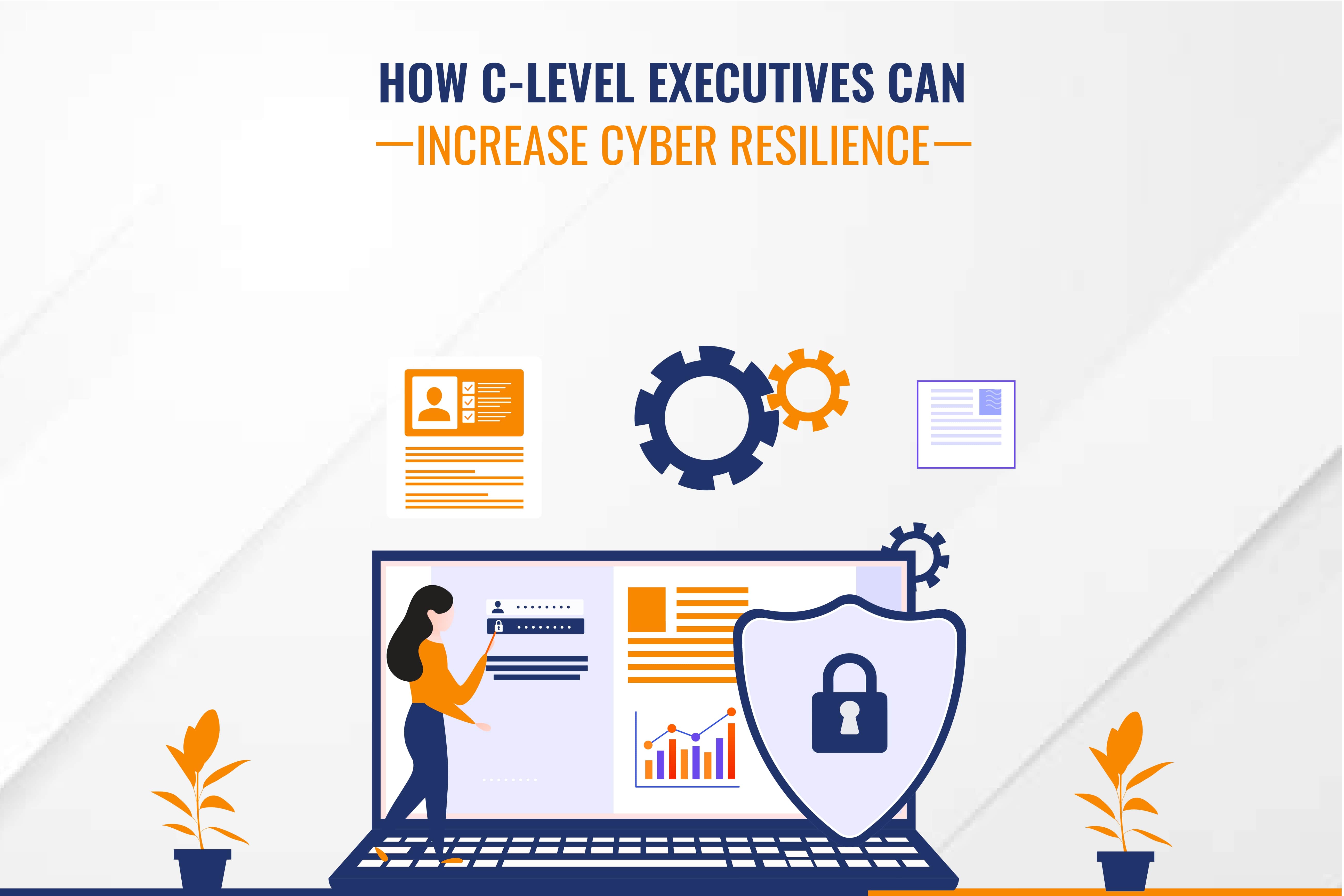
How Can C-Level Executives Increase Cyber Resilience?
In today's digital age, the threat landscape for businesses is constantly evolving. Cyberattacks are becoming more sophisticated and prevalent, posing significant risks to organizations of all sizes and industries.
As the stewards of their companies' strategic vision and operational excellence, C-level executives play a pivotal role in ensuring cyber resilience. Let us help you explore strategies and initiatives that C-level executives can implement to enhance cyber resilience within their organizations with technical transformation.
Understanding Cyber Resilience
Before delving into specific strategies, it's crucial to understand what cyber resilience entails. Cyber resilience goes beyond mere cybersecurity measures. While cybersecurity focuses on preventing, detecting, and responding to cyber threats, cyber resilience encompasses the ability to anticipate, withstand, and recover from attacks or disruptions effectively.
Cyber resilience involves a holistic approach that integrates people, processes, and technology while using technical training programs to minimize the impact of cyber incidents and maintain business continuity. It requires proactive risk management, robust incident response capabilities, and continuous adaptation to emerging threats.
The Role of C-Level Executives
As leaders at the highest echelons of the organization, C-level executives bear ultimate responsibility for cybersecurity and cyber resilience. They must champion a culture of security throughout the organization and prioritize investments in cybersecurity initiatives. Here are several key steps that C-level executives can take to increase cyber resilience:
1. Strategic Alignment
Align cybersecurity initiatives with overall business objectives and risk appetite. C-level executives should ensure that cybersecurity investments are commensurate with the organization's risk exposure and strategic priorities. By integrating cybersecurity into strategic planning processes, executives can foster a culture of cyber resilience across all business functions.
2. Executive Leadership and Oversight
Establish clear lines of accountability for cybersecurity at the executive level. Designate a Chief Information Security Officer (CISO) or equivalent executive responsible for overseeing cybersecurity efforts and reporting directly to the CEO or the Board of Directors. C-level executives should provide active leadership and support for cybersecurity initiatives, emphasizing its importance to the organization's long-term success.
3. Technical Management Training
Invest in technical management training programs to enhance the cyber literacy of senior executives and board members. While C-level executives don't need to become cybersecurity experts, they should have a solid understanding of cybersecurity risks, best practices, and emerging threats. Technical management training programs can help bridge the knowledge gap and empower executives to make informed decisions about cybersecurity investments and strategy.
4. Technical Transformation
Embrace digital transformation initiatives with a focus on security and resilience. As organizations adopt new technologies and migrate to cloud-based environments, they must prioritize security considerations throughout the development and implementation process. C-level executives should ensure that cybersecurity is integrated into all stages of technical transformation initiatives, from design and deployment to ongoing maintenance and monitoring.
5. Risk Management and Resilience Planning
Implement robust risk management processes to identify, assess, and mitigate cybersecurity risks effectively. Conduct regular risk assessments to evaluate the organization's exposure to cyber threats and prioritize mitigation efforts based on potential impact and likelihood. Develop comprehensive resilience plans that outline procedures for responding to cyber incidents, restoring operations, and minimizing disruption to business continuity.
6. Collaboration and Information Sharing
Foster collaboration with industry peers, government agencies, and cybersecurity experts to enhance collective resilience against cyber threats. Participate in information-sharing initiatives and industry forums to stay abreast of emerging threats, vulnerabilities, and best practices. By sharing insights and experiences with peers, along with implementing technical training programs, organizations can learn from each other's successes and failures, strengthening the overall cybersecurity posture.
7. Continuous Improvement
Embrace a culture of continuous improvement and adaptation to evolving cyber threats. Regularly review and update cybersecurity policies, procedures, and controls to address emerging risks and compliance requirements. Leverage threat intelligence and analytics along with technical training programs to enhance threat detection capabilities and proactively identify potential security breaches. Encourage feedback from employees and stakeholders to identify areas for improvement and innovation in cybersecurity practices.
Let’s Conclude!
In today's interconnected and digitally driven world, cyber resilience is not merely a technical concern but a strategic imperative for organizations. C-level executives play a critical role in driving the cybersecurity agenda and fostering a culture of cyber resilience throughout the organization.
By aligning cybersecurity initiatives with strategic objectives, investing in technical management training, embracing digital transformation securely, and prioritizing risk management and resilience planning, executives can enhance their organization's ability to withstand and recover from cyber threats. By collaborating with industry peers, embracing continuous improvement, employing technical management training, and providing active leadership and oversight, C-level executives can strengthen their organization's cyber resilience posture and safeguard its long-term success in an increasingly complex threat landscape.
